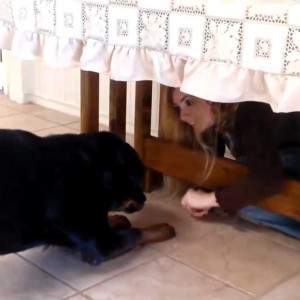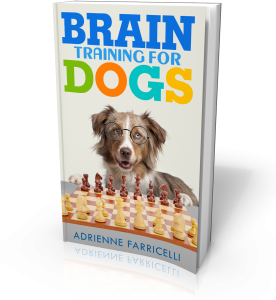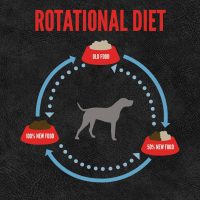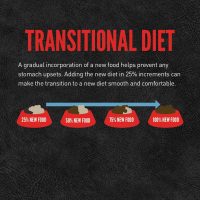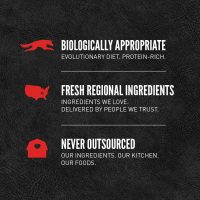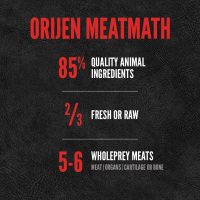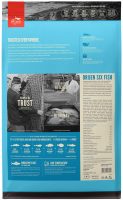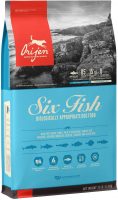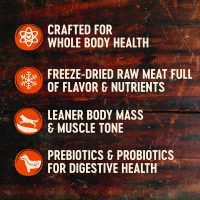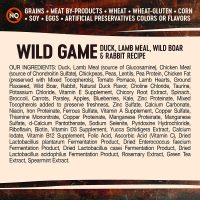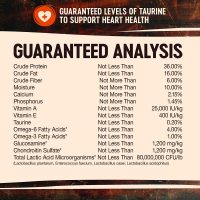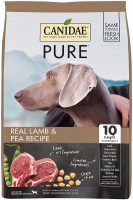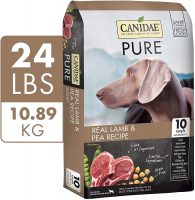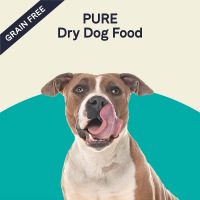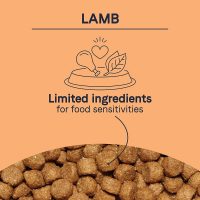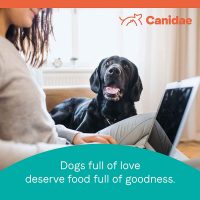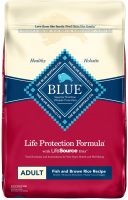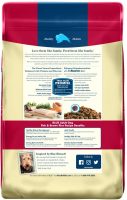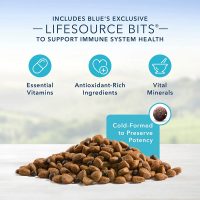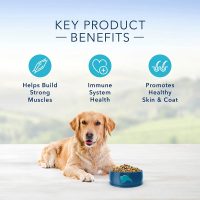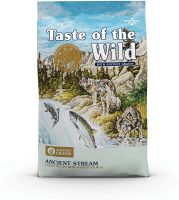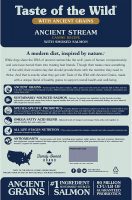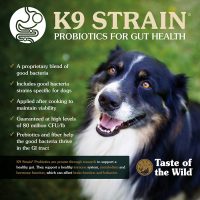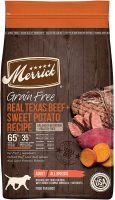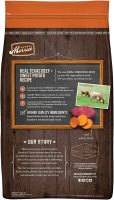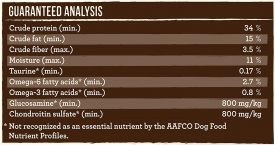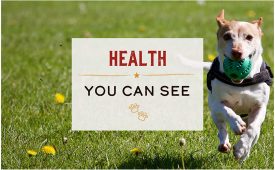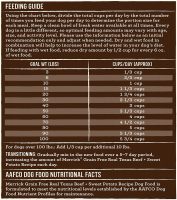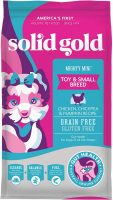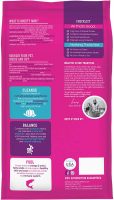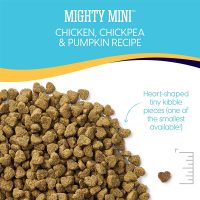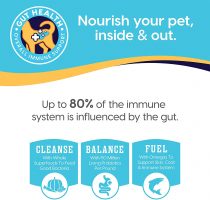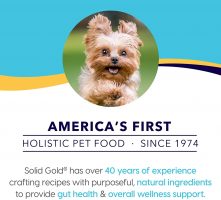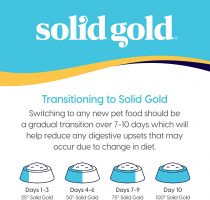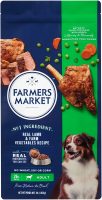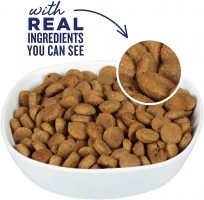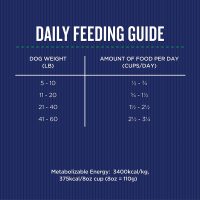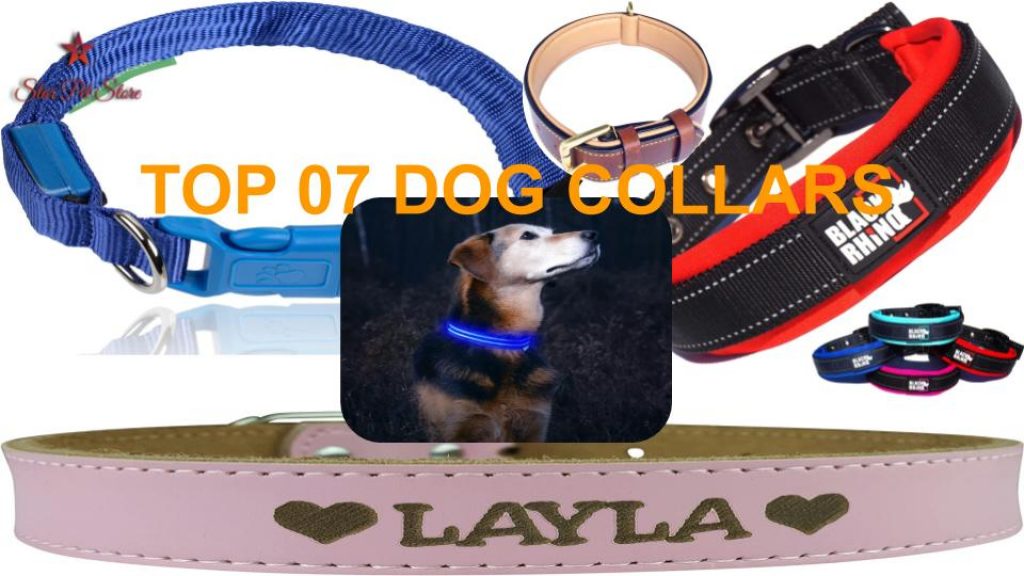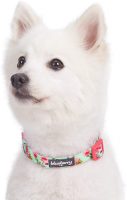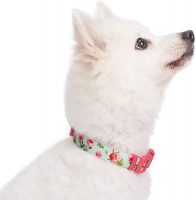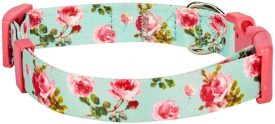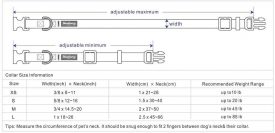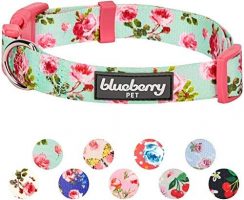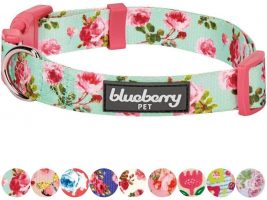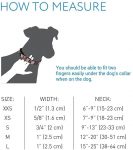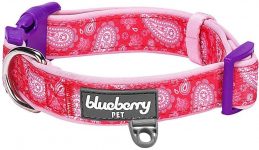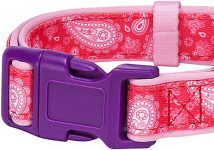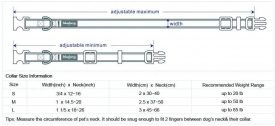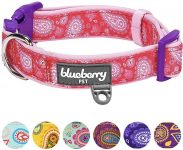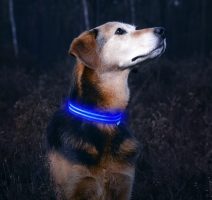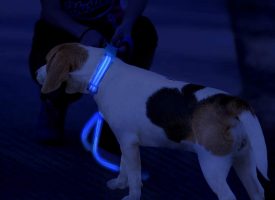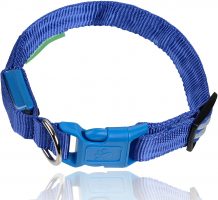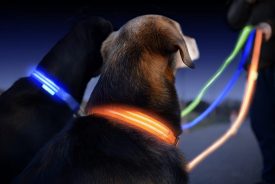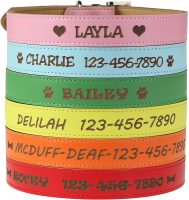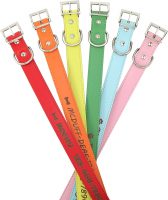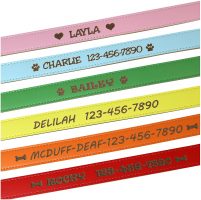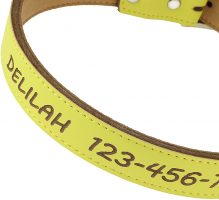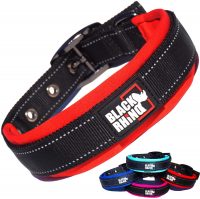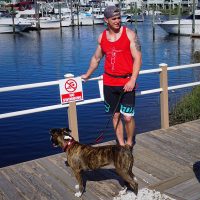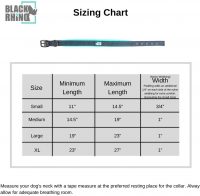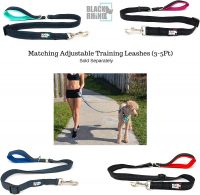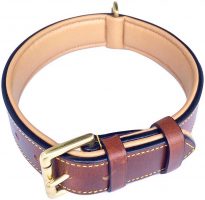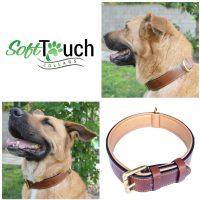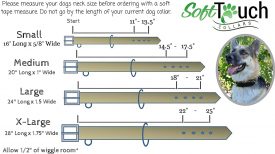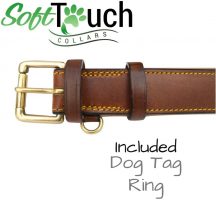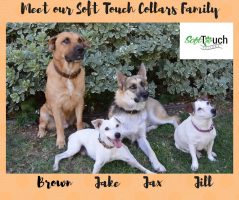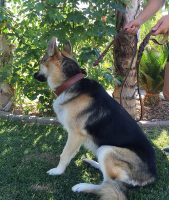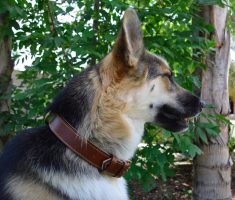Assessing the situation: If you realize that your dog has eaten bones, the first thing you should do is stay calm and assess the situation. Determine if your dog is showing any signs of distress, such as vomiting or difficulty breathing. If your dog is showing severe signs of distress, call your veterinarian or a poison control hotline immediately.
Seeking medical guidance: If you’re unsure of what to do or if your dog is showing mild to moderate signs of distress, it’s important to seek guidance from a medical professional. Your veterinarian or a poison control hotline can provide you with specific instructions on how to proceed. When seeking guidance, be sure to have the following information on hand: the type of bones ingested, your dog’s size and breed, and any symptoms your dog is exhibiting.
Following instructions: Once you have spoken with a medical professional, it’s important to follow their instructions closely. They may recommend inducing vomiting to remove the bones from your dog’s system, or they may recommend bringing your dog to the nearest animal hospital for further treatment. In some cases, they may recommend a combination of both. Whatever the instructions, it’s crucial to follow them to ensure the safety of your pet.
Preventing future incidents: To prevent your dog from accessing bones in the future, it’s important to keep bones out of reach and provide appropriate chew toys. Bones can be dangerous to a dog’s health, as they can splinter and cause blockages or tears in the digestive system. By providing appropriate chew toys and keeping bones out of reach, you can help prevent future incidents and ensure the safety of your pet.
In conclusion, if you suspect that your dog has ingested bones, it’s important to take quick action and seek guidance from a medical professional. Follow the instructions provided to ensure the safety of your pet, and take steps to prevent future incidents by keeping bones out of reach and providing appropriate chew toys. By taking these steps, you can help keep your dog safe and healthy.
]]>Dogs are highly skilled at communicating with their bodies and can use a variety of cues to convey their emotional state or intentions. One way that dogs communicate is through the position of their ears. If you’ve ever noticed your dog with one ear up and one ear down, you may be wondering what this behavior means.
First, it’s important to understand that the position of a dog’s ears can be a good indication of their emotional state or intentions. For example, if a dog’s ears are perked up and alert, it could mean that they are attentive or interested in something. On the other hand, if a dog’s ears are flattened against their head, it could indicate fear or aggression.
So, what does it mean when a dog has one ear up and one ear down? This behavior can have a few different meanings. It could be that the dog is unsure or indecisive about something. For example, if they are confronted with an unfamiliar person or situation, they may be unsure of how to react. This posture could also indicate that the dog is conflicted, as they may be trying to balance two conflicting emotions or desires.
It’s important to note that the position of a dog’s ears is just one aspect of their body language. To fully understand how a dog is feeling, it’s important to consider their overall body language, including their tail position, body posture, and facial expressions. Additionally, it’s important to consider the context in which the dog is exhibiting these behaviors.
In conclusion, the meaning of a dog having one ear up and one ear down can vary, but it is often a sign that they are unsure, indecisive, or conflicted. To better understand your dog’s needs and emotions, it’s important to pay attention to their body language and consider the context in which they are exhibiting certain behaviors.
When a dog runs away, it is often due to an instinctual flight response. This means that the dog is running away from something it perceives as a threat. If the owner chases the dog, it can reinforce the dog’s belief that it is in danger and cause it to run even further away. Chasing a lost dog can also be dangerous for the owner, as they may not be familiar with the area and could get lost themselves, or may trip and fall while trying to catch the dog. Additionally, the owner may encounter other dangers such as traffic or aggressive animals while chasing the dog.
Instead of chasing the dog, there are several alternative methods to consider when trying to retrieve a lost dog. One effective method is to call the dog’s name and offer rewards, such as treats or toys. This can help to lure the dog back to the owner and show the dog that there is no threat. Another method is to use a whistle or other signal that the dog is trained to respond to. This can help to get the dog’s attention and help it locate the owner.
If these methods are not successful, it may be helpful to seek the assistance of a professional dog trainer or animal control officer. These individuals have experience in safely retrieving lost dogs and can provide additional resources and support.
In summary, chasing a lost dog is the least effective method for retrieving it. This method can actually cause the dog to run further away and can be dangerous for the owner. Instead, it is more effective to call the dog’s name and offer rewards, use a trained signal, or seek the assistance of a professional. It is important to have a plan in place for retrieving a lost dog and to consider alternative methods if necessary. As a pet owner, it is crucial to think about what you would do in the event that your dog gets off leash and runs away, and to consider seeking professional help if needed. By being prepared and knowing the most effective methods, you can increase the chances of safely retrieving your lost dog.
]]>Do larger dogs fit into what size baby clothes fit my dog? It is not always so easy for dogs to wear many different sizes at once. Some dogs are tall and heavy, while others are extremely short and flimsy.
While some breeds are specially made for certain breeds, most of them actually just use common clothing items for all breeds. Some breeds are just much more active than others. They are able to jump and run much better than smaller breeds.
Small breeds have the tendency to shed a lot more than larger breeds. When a baby starts to shed, the dog must go through that shedding as well. This causes both to become shorter and heavier. If you want to get clothing that will actually work with your pet and their size, then choose a brand that offers a large selection of clothing items for your canine friend. Some small dogs may be hard for your average clothing shop to keep up with. You have to order clothing for your dog in order to get the size that fits them. Many large stores will allow you to try on clothing before you buy it.
If you do not feel comfortable purchasing the clothing online, you can always call the store that you want to order from. Many stores will have someone who is knowledgeable about the items you are ordering. The staff will be able to give you helpful suggestions on which clothing would work the best.
Clothing that will work is important because you want to make sure that your furry friend gets the protection that they need. You would not want to purchase a shirt that is too small or too big. As you shop for clothing, consider how you will be using the clothing. and the style of clothing that will work for your pet.
When purchasing clothing, make sure that the item is made out of a soft material. If you are going to be putting it on your dog, you want it to be durable and hold up over time. You do not want it to be uncomfortable so it may not be a good choice. Choose clothing that will fit your pet but make sure that the item is also comfortable for them. Once you do that, you will find that clothing is very beneficial to your pet.
You can also choose clothes that have the name of your pet printed on the clothing. This will make your pet’s name very prominent in the eyes of other people. If you have a collie dog, then you can have the name of your dog printed on the collar. This will not only make your pet unique but also will let other people know what kind of animal that they are dealing with.
If you are purchasing clothing for a large breed dog, then you may not be able to choose the exact clothing that they are looking for. In that case, you can choose a small size. When ordering clothing, make sure that you provide the measurements of the dog’s chest and the legs. This will help to ensure that you are purchasing the right size. If you have any questions about the clothing, then contact the store where you are ordering. so they can advise you of the correct size.
You should always be sure that you are ordering clothing for the correct size so if the item arrives and the pet is smaller than the one that you ordered, you do not return the clothing. You should also be sure to take pictures of the item that you order. so that you can be sure that you do not return the wrong size.
If you have trouble ordering clothing, you can even look for local pet stores that sell clothing. In most cases, you will be able to talk to a customer service representative that will be able to help you with your choice.
]]>One of the most difficult challenges a dog owner can face is when their dog gets off its leash and runs away. It can be an incredibly stressful and frustrating situation, and it is important to have a plan in place to try and successfully retrieve your dog. However, there are a variety of methods that can be used to try and recover a dog that has gotten off its leash, and unfortunately, some of these methods are more effective than others. In this blog post, we will be discussing the least effective method to retrieve a dog that has gotten off its leash.
Once you know what is the least effective method to retrieve a dog that has got loose, then you can use these methods to find the dog. They are great tools to have. Dont Worry we havecovered you with all the possible situations and solutions to them as well. So, let’s understand what is the least effective method to retrieve a dog that has got off leash and why it is least effective.
What is the least effective way to retrieve a dog that has gotten loose? Well, there is more problems that can be faced once if the Dog is unleased:
What would you do if a dog got off his her leash?
When a dog gets off its leash, it can be a scary and frustrating situation. Not only can it be dangerous for the dog, but it can also be a danger to the public. As an owner, it’s important to act quickly to ensure the safety of the dog and those around him or her. Here are some tips on what to do if a dog gets off its leash.
First, stay calm and remain composed. It can be tempting to panic, but it’s important to stay in control of the situation. If you panic, the dog may become more excitable and harder to control.
Second, assess the situation. Are you in a public place? Is the dog in an area with a lot of people? Are there any cars nearby? Be sure to take a quick assessment of the situation to determine what kind of danger the dog may be in.
Third, try to coax the dog back to you. If the dog is close by, call it to you and offer treats or toys as a reward. If the dog is farther away, you may need to enlist the help of bystanders. Ask them to help you create a barrier around the dog so that he or she can’t escape.
Fourth, never chase the dog. This could cause the dog to become more frightened or even aggressive. It’s best to use a calm and reassuring tone of voice when calling the dog back.
Fifth, be prepared to use a leash. If the dog is close enough, you should be able to attach a leash to him or her. If the dog is still too far away, you may need to call animal control for assistance.
Finally, make sure to take the necessary steps to prevent the dog from getting off its leash in the future. This may include putting an ID tag on the dog, keeping the leash short, and monitoring the dog more closely.
If a dog gets off its leash, it’s important to stay in control of the situation and take the necessary steps to ensure its safety. With the help of bystanders and animal control, you should be able to get the dog back safely
What would you do if a dog got off his her leash?
If you happen to come across a situation where a dog is off its leash, it can be a potentially dangerous situation for both you and the animal. It is important to remain calm and take the correct steps to ensure that the dog does not end up getting hurt or causing harm to anyone else. Here are some tips for what to do if a dog gets off its leash.
First and foremost, try to remain calm. It is important to not make any sudden movements or loud noises that could startle the dog and make it more likely to act aggressively or run away. If possible, try to get the attention of the dog’s owner and let them know what has happened.
If the dog’s owner is not present, you should try to get the dog to come to you in a calm and gentle manner. Speak in a soothing voice, offer the dog a treat, and hold out your hand for the dog to sniff. If the dog appears to be friendly, you can try to approach it slowly and gently and see if it will let you pet it.
If the dog appears to be frightened or aggressive, it is best to keep your distance and call animal control. Animal control will be able to safely capture the dog and bring it to a shelter where it can be looked after and reunited with its owner.
No matter what, it is important to remain calm and take the necessary steps to ensure the safety of the dog and anyone else in the vicinity. If a dog gets off its leash, it is important to take the correct steps to ensure that the animal is safely recovered.
How do you train your dog to be off leash and not get distracted and listen to you?
Training your dog to be off-leash and listen to you can be a difficult task. However, with patience and consistency, you can teach your pup to be obedient and stay near you when off-leash. Here are some tips to help you along the way.
1. Start with a Long Leash: Before you even think about taking your pup off-leash, start with a longer leash. A long leash allows you to keep your dog close while giving them the freedom to explore their surroundings. When your pup gets too far away, they will feel the tug on the leash and will learn to stay closer to you.
2. Use Positive Reinforcement: Positive reinforcement is a key part of training your dog. When your pup does something right, reward them with treats, words of encouragement, and praise. This will encourage them to continue listening to you and help them to form a positive association with the behavior.
3. Practice in an Isolated Area: When it comes to off-leash training, it’s important to practice in an area that is away from distractions. This will help your pup focus on you and the commands you are giving them.
4. Establish a Recall Command: Establishing a recall command is essential when it comes to off-leash training. This is the command you will use to get your pup’s attention and have them come back to you. If you’re consistent with your training, your pup will soon understand that when you call, they need to come back to you immediately.
5. Be Patient and Consistent: Training your pup to be off-leash and listen to you is no easy task. You need to be patient and consistent in order to ensure that your pup understands what you are asking them to do. Don’t give up if your pup doesn’t get it right away – keep practicing and eventually, they will get it.
Training your pup to be off-leash and listen to you is a challenging but rewarding process. With patience and consistency, you can teach your pup to stay close to you and obey your commands, even when off-leash.
Can I trust my dog off leash?
Are you considering giving your dog the freedom to roam off-leash? While it is a great way to let your pup explore and get some much-needed exercise, it is important to consider several factors before deciding if it is the right choice for you and your pet.
First and foremost, you must have complete trust in your dog. Can you trust your pup to stay in sight, come when called, and not run off after other animals or humans? If not, then off-leash time is not the right choice for you.
Second, you should take into consideration the environment in which your dog will be off-leash. Are there other dogs or animals which could pose a risk to your pup? Is the area a safe place for your pet to explore, or are there roads or other hazards nearby? It is important to ensure that your pup is staying in an area where they can be safe and secure.
Third, You should also make sure that your pup is well-trained before taking them off-leash. Obedience training is essential for any pup, as it will help you to be able to trust your dog to obey commands and stay close by. Additionally, it is important to continue training your pup while they are off-leash, in order to maintain the trust you have built and ensure that your pup stays safe.
Finally, it is important to have the right equipment for your pup’s off-leash adventures. A well-fitted collar with an identification tag is a must, as it will help you to easily identify your pet if they were to wander off. You should also consider investing in a tracking device, such as a GPS tracker, to ensure that you can always find your pup if they were to wander too far.
In the end, it is important to carefully consider the factors mentioned above before deciding if off-leash freedom is right for you and your pup. With the right preparation and safety measures, you can ensure that your pup is able to explore and have fun off-leash while staying safe and secure.
What steps should you take if you see a dog running loose in public?
Running loose dogs in public can be a nuisance and potentially dangerous for both people and the dog. If you ever encounter a loose dog in public, there are certain steps you can take to ensure the safety of all involved.
The first step is to remain calm. Do not attempt to grab, chase, or corner the dog, as this can agitate the animal and lead to an attack. Instead, try to approach the dog slowly and calmly. Speak in a soft, soothing voice, and offer treats if you have them.
Do not attempt to pet the dog right away. Instead, try to allow the dog to come to you. If the dog is wary and doesn’t approach, stay put and call animal control or the police.
If you are able to establish a bond with the dog, you can try to capture it. If possible, get a leash or a blanket to create a barrier between you and the dog. You can then attempt to lead the dog out of the area.
If you are unable to capture the dog, call animal control or the police for help. They can assess the situation and take appropriate action. Once the dog has been safely contained, you can attempt to identify the owner.
How do you safely catch a loose dog?
When a dog is loose and running around, it can be difficult to catch it safely. This is especially true if the dog is frightened or aggressive. However, with a bit of patience and understanding, you can safely capture a loose dog and reunite it with its owner.
The most important thing to remember when catching a loose dog is to remain calm and not make any sudden movements. If the dog is scared or aggressive, it may become more agitated if you try to grab it or make sudden movements. Speak in a gentle and soothing voice, and move slowly.
If you can, try to lure the dog with treats. Dogs often respond positively to food, so offering a snack can help to calm them down and make them more likely to approach you.
If the dog is still too scared to approach you, try using a leash or pole to help capture it. Put the leash or pole around the dog’s neck and slowly reel it in. Once you have the leash or pole securely around the dog, you can lead it to safety.
If you are unable to lure the dog with food, or if the dog is too scared to approach you, you may need to call animal control for help. Animal control officers are trained to safely capture loose dogs and reunite them with their owners.
Finally, if the dog is injured or in distress, you may need to call an animal rescue organization to help. Animal rescue organizations are experienced in dealing with injured and scared animals, and can provide the appropriate care.
No matter what, it is always important to approach a loose dog carefully and with patience. With some understanding and a bit of caution, you can safely capture a loose dog and reunite it with its owner.
What should you do if you find a lost dog?
If you find a lost dog, it can be an incredibly stressful experience, and it is important to know what to do. Here are some tips on what to do if you find a lost dog:
1. Stay calm: It is easy to panic when you find a lost dog, but it is important to stay calm and collected. If you appear to be scared or uncertain, the dog may become scared or aggressive.
2. Assess the situation: Take some time to assess the situation and make sure that you are not putting yourself in any danger. If the dog is exhibiting aggressive behavior, call your local animal services for assistance.
3. Call Animal Services: If the dog does not appear to be aggressive, you should call your local animal services. They will be able to help you determine if the dog is a stray or if someone is looking for it.
4. Check for ID: Look for any type of identification on the dog, such as a collar or tags. This can help you reunite the dog with its owner.
5. Take precautions: If you decide to take the dog home with you, make sure to take precautions. Put the dog in a secure area, such as a fenced yard, and make sure to keep it away from other animals.
6. Contact the owner: If you are able to find the owner, contact them as soon as possible. If they are not able to take the dog back, you can offer to foster the dog until it can be reunited with its family.
Finding a lost dog can be a stressful experience, but with the right steps, you can make sure the dog is reunited with its owner. Make sure to stay calm and call local animal services for assistance. With a little bit of patience, you can help reunite a lost dog with its family.
What should you do if a loose dog approaches you in an aggressive manner?
If you come across a loose dog that is approaching you in an aggressive manner, it is important to stay calm and take the appropriate measures to protect yourself. Here are some tips on what you should do if you encounter an aggressive dog:
1. Avoid making direct eye contact with the dog. Avoiding direct eye contact is important as it will help avoid escalating the situation.
2. Stand still and remain calm. Dogs can sense fear, so it is important to remain calm.
3. Back away slowly. Move away from the dog slowly and never turn your back or run away.
4. Use a loud voice or make noise. Make loud noises or use a loud voice to try and scare the dog away.
5. If the dog gets too close, use something to shield yourself. If the dog gets too close, use an item such as a bag or a jacket to shield yourself from potential bites.
6. Contact local authorities. If the dog is still approaching you in an aggressive manner, contact local authorities such as the police or animal control.
Following these steps can help protect you in the event of an aggressive dog encounter. Remember to always remain calm and take the necessary steps to protect yourself.
How do you identify a lost dog’s owner?
If you’ve come across a lost dog, you may be wondering how to find their owner. Thankfully, there are many steps you can take to identify and reunite a lost dog with their owner.
First and foremost, the most important step is to take the dog to the nearest animal control or veterinarian. Most dogs will have some form of identification on them, such as a microchip or a collar with an ID tag. This information can be used to contact the owner and reunite them with their lost pet.
In addition, you can also contact local animal shelters or rescue groups to see if the lost dog has been reported missing. Many shelters and rescues have databases of lost and found pets that they can search. You can also post information about the dog on social media or websites like Craigslist, as well as post flyers in the area where the dog was found.
If the owner is unable to be located, you may want to consider fostering the dog until a more permanent home can be found. This will help ensure that the dog is safe and cared for until they can be reunited with their rightful owner.
By following these steps, you can help reunite a lost dog with their owner. With a little bit of patience and effort, you can make a big difference in the life of a lost pet.
What should you do if a loose dog is injured or in distress?
If you encounter a loose dog that appears to be injured or in distress, it can be a difficult and challenging situation. It’s important to approach the situation with caution and respect for the animal’s safety. Here are some tips for what to do if you find a loose dog that’s injured or in distress.
1. Check the animal for signs of injury: Before you approach the dog, take a moment to assess the situation from a distance. Look for any signs of physical injury, such as bleeding, limping, or obvious wounds. If you see any signs of injury, proceed with caution.
2. Speak calmly and move slowly: If the dog appears to be injured, it may be scared and agitated. Move slowly and talk to the dog in a soothing, low voice. Don’t make any sudden movements, as this may frighten the animal.
3. Call for help: If the animal appears to be in distress or injured, call for help. Contact your local animal shelter or a veterinarian to get advice on how to handle the situation.
4. Gently restrain the dog: If it’s safe to do so, gently restrain the animal by placing a leash or towel around its neck. This will help calm the animal and keep it from running away.
5. Provide basic care: If the animal is injured, provide basic first aid. Stop any bleeding, clean any wounds, and bandage them if necessary. You may also be able to provide the animal with food and water.
If you encounter an injured or distressed loose dog, remember to remain calm and move slowly. Call for help and restrain the animal if you can. Providing basic care can help keep the animal safe until it can receive proper medical attention.
How can you prevent a dog from getting loose in the first place?
If you’re a pet owner, you know the importance of keeping your dog safe and secure. Unfortunately, dogs can easily escape their enclosures and become lost, or worse, injured or killed. To prevent your pup from getting loose, there are several steps you can take to ensure their safety.
The first step in preventing your dog from getting loose is to make sure their enclosure is escape-proof. Check the fencing for any weak points where a determined pup could break out. If your fence is aging or in need of repair, repair it immediately. Consider installing a higher fence, or even an invisible fence, to give your pup extra security.
Another way to prevent your dog from getting loose is to ensure all gates and doors are properly secured. When opening or closing a gate or door, be sure to close it securely behind you. Consider investing in a pet gate that closes automatically, or a pet door that only opens with a chip or key.
It’s also important to ensure your pet is always wearing a collar with proper identification. Make sure your pet’s tags are up to date with your current contact information, as this will make it easier for someone to return your pet to you if they find them. You may also want to consider having your pet microchipped. This will give you peace of mind that if they do escape, they can be identified and returned to you quickly.
Finally, it’s important to keep your pet’s environment secure. If you’re going to be away for a few days, make sure someone is checking in on your pup and making sure the enclosure is secure. If you’re going on vacation, consider boarding your pet at a reputable facility.
By following these tips, you can help to ensure that your pet will stay secure and safe. Remember, prevention is key when it comes to keeping your pup safe and sound.
What should you do if you are unable to find a lost dog’s owner?
If you have found a lost dog, it can be a difficult and emotional experience. You may be wondering what to do next, especially if you are unable to find the owner. Here are a few things to consider if you find yourself in this situation.
First, it is important to do whatever you can to find the owner. Check the area for signs of an owner, such as a collar or tags, and ask around your neighborhood to see if anyone recognizes the dog. Post flyers of the dog in the area, and be sure to include a contact number. Additionally, you can check online resources such as Lost and Found Pets websites or social media platforms.
If you are unable to locate the owner, you should take the dog to a local veterinarian or animal shelter. They can scan it for a microchip, which may have the owner’s contact information. If the dog does not have a microchip, the shelter may be able to hold the animal and help reunite it with its owner.
If you decide to keep the dog, it is important to remember that the dog may have medical needs, behavioral issues, and other challenges that require special attention. Before you take on this responsibility, it is important to make sure you can financially and emotionally support the animal.
Finally, be sure to spay or neuter the dog and make sure it has all of the necessary vaccinations. This will help to ensure the safety of the animal, as well as the safety of other pets and people in your community.
If you find a lost dog and are unable to find its owner, you should take the necessary steps to reunite the dog with its owner. If that is not possible, you should consider the long-term implications of taking the animal into your home.
How do you handle a situation involving multiple loose dogs?
When approaching a situation involving multiple loose dogs, it is important to remain calm and take precautionary measures to ensure the safety of both yourself and the animals. By following a few steps, you can ensure that the situation is resolved quickly and safely.
1. Remain Calm: Above all else, stay calm and be aware of your body language. Loud noises and sudden movements can startle the dogs and lead to aggression.
2. Identify the Dogs: Take a few moments to observe the dogs and assess their behavior. If the dogs are friendly and approach you, you may be able to pet them and identify any tags.
3. Contact the Owner: If the dogs have tags, contact the owner and explain the situation. If the owner is unavailable, ask a neighbor if they know who the dogs belong to.
4. Secure the Area: If possible, secure the area and limit the dogs’ access to the street. This will help prevent them from running away or getting hit by a car.
5. Contact Animal Control: If the owner is not located, contact animal control to collect the dogs and take them to a shelter.
6. Exercise Caution: If the dogs appear to be aggressive or fearful, it is best to stay away and contact animal control.
By following these steps, you can help ensure that the situation involving multiple loose dogs is resolved quickly and safely.
What should you do if a loose dog is causing a disturbance or threat to public safety?
If you encounter a loose dog that is causing a disturbance or posing a threat to public safety, there are several things you should do to ensure everyone’s safety.
First, do not attempt to catch the dog yourself. Doing so may put you in danger and could worsen the situation. Instead, call the local animal control office or the police. Let them know the location of the dog and provide as much information as possible, such as its size, breed, and behavior.
If the dog is not aggressive, you can try to calm it down by speaking in a soft voice and offering food. Do not try to touch the dog as this could cause it to become aggressive.
If the dog is aggressive, it is best to keep your distance and call for help. Do not attempt to approach the dog or attempt to restrain it.
Finally, it is important to remember that the dog is likely scared and confused. Do not take any action that could further endanger the dog or put people in danger.
By following these steps, you can help ensure the safety of both people and animals in the event of a loose dog causing a disturbance or threat to public safety.
How do you properly care for a lost dog until its owner is located?
As a responsible pet owner, you may be wondering how to properly care for a lost dog until its owner is located. Fortunately, there are some simple steps you can take to ensure the safety and wellbeing of a lost pup until they are reunited with their family.
The first step is to stay calm and assess the situation. If the dog appears to be distressed or injured, take it to a veterinarian or animal shelter immediately. If the dog is healthy, try to contain the animal in a secure area or take it to a safe place, such as a friend or family member’s house.
Once the dog is safe, the next step is to locate its owner. Start by checking your local animal shelters, veterinary offices, and pet stores to see if the dog is listed as a lost pet. You can also post a lost pet on social media and in local newspapers, as well as create a “lost dog” flyer with a current photo and relevant information.
Once the dog is in your care, you will need to provide food, water, shelter, and basic care. Make sure the dog has a comfortable place to sleep, such as a crate or bed. Provide a high-quality diet that is appropriate for their size and age, and make sure they have access to clean, fresh water at all times.
It’s also important to provide mental stimulation and socialization for the pup. If possible, take the dog for a walk or play with them in a secure area. This will help to keep the pup calm and reduce stress.
Finally, remember to keep the dog in your care for only as long as necessary. It is important to reunite the pup with its family as soon as possible. If you are able to locate the dog’s owner, make sure to provide them with detailed information about the pup’s condition and behavior while in your care.
What should you do if a loose dog is with a litter of puppies?
If you come across a loose dog with a litter of puppies, it’s important to stay calm and take the proper steps to ensure the safety of the dogs and yourself. Here is what you should do in this situation:
1. Don’t approach the dog. It’s best to stay away from the dog and its puppies, as a scared or aggressive dog may bite or attack.
2. Call animal control. If you come across a loose dog and its puppies, contact your local animal control agency. They will be able to safely capture the dog and its puppies and take them to a shelter or rescue organization.
3. Offer food and water. If it is safe to do so, you can offer food and water to the dog and its puppies. This can help the dog stay hydrated and nourished while waiting for animal control to arrive.
4. Provide shelter. If possible, you can provide temporary shelter for the dog and its puppies. This can help them stay out of the elements and remain safe until animal control arrives.
5. Don’t try to capture the dog yourself. It is important to leave the capture of the dog and its puppies to the professionals. Trying to capture the dog yourself can put you and the animal in danger.
What should you do if a loose dog is a breed that is commonly associated with aggression?
If you come across a loose dog that is a breed commonly associated with aggression, there are steps you can take to ensure your safety and the safety of the dog.
First, remain calm and try to remain still. Do not look directly into the dog’s eyes, as this can be seen as a form of aggression. Speak in a low and reassuring voice while slowly backing away. Do not turn your back or run away, as this may cause the dog to become more aggressive.
If the dog is still loose, contact the local animal control or the police for assistance. Do not attempt to approach or capture the dog yourself. Animal control or the police will be able to safely capture the dog and return it to its owner, if possible.
If the dog is on a leash and is being walked by its owner, be respectful of the owner and keep your distance. Ask the owner if it is okay to pet the dog, as some may be fearful of strangers. If the owner says yes, approach the dog slowly, offering a hand to sniff. Do not reach over the dog’s head.
If at any point you feel unsafe or threatened, do not hesitate to call for help. Aggressive behavior must be taken seriously, and professional help may be needed to de-escalate the situation.
By following the steps outlined in this article, you can help ensure your safety and the safety of the dog. Remember to stay alert and be aware of your surroundings. Talk to the dog’s owner and observe the animal’s behavior. If you are ever feeling uncomfortable or unsafe, do not hesitate to leave the situation. Finally, if you are ever in doubt, reach out to a professional for advice and assistance. With a little bit of knowledge and caution, you can have a positive and safe experience interacting with any dog.
]]>Dogs have become a very popular pet. They are seen as a source of good fortune by many and are considered an important part of family life. A dog is often an extension of the family and people feel that they do more than any other animal to maintain a household.
However, like any breed, a large part of that relationship can go wrong. Many problems can occur that are very difficult to solve on your own so it is important to get the help you need to ensure that your pet is in the best possible health.
If you are considering raising a dog, you need to understand the health problems that can impact this decision. There are many different types of diseases that can attack the digestive system of a dog so the first thing you should consider is what the source of that infection is. It is very common for dogs to contract intestinal worms that are passed on from their mother during pregnancy or even during breeding.
Other canine immune diseases such as distemper and rabies can affect dogs and can cause a variety of symptoms. These diseases tend to run in families and can be passed on easily when a dog gets sick. Make sure that you get your dog treated as soon as possible if they are showing any of these signs.
There is no way to give your dog proper nutrition without getting it a balanced diet. Dogs need more than the calories in their food and even if your dog is eating a balanced diet, they are still not getting all the nutrients that they need. A healthy diet will ensure that your dog’s digestive system stays healthy and their bones are strong.
There are many types of food available for dogs but you should make sure that you only feed your dog commercial dog food. This will help them to have a steady supply of vitamins and minerals in their diets. You should also make sure that you check the label regularly and make sure that you are feeding the right type of food.
If you want to find the best dog food in 2020, then you can start by looking at the ingredients on the labels and finding the ones that will be most beneficial to your dog. Once you have found the right type of food, then it is time to introduce it to your dog. Give him or her a free dog food sample to see how it reacts to it before making a commitment to buy the product.
Another great idea is to take your dog to the vet and see if they know of dog food that meets your particular needs. They may have a recommendation that will make it easy for you to choose a good product. This could save you a great deal of money because the vet will probably be able to help you find the best dog food in 2020.
Also, a good veterinarian should be able to tell you which brands of dog foods are known for their effectiveness. They may also be able to recommend a special diet that is right for your dog. You should look for the food that is the best for their breed of dog.
The last tip is to ask your vet about special types of vitamins that will be beneficial to your dog. Make sure that your dog is getting the proper vitamins and nutrients that are necessary to help them stay healthy.
If you make these tips for choosing the best dog food in 2020, you will be happy that you took the extra time to find the right food for your dog. Make sure that you choose a balanced diet for your dog and make sure that they are getting all the vitamins and minerals that they need. The best dog food in 2020 is the one that keeps your dog healthy and active.
]]>Given the sensible advice to socially distance, what better time to create a safe, at-home haven for your dog? Here are five ways you can increase your dog’s (and your own!) enjoyment of your yard.
1. Invest in a good fence. A secure fence is the most critical element of a safe place for your dog to potty, play, train, and just hang out. Sometimes a dog owner will tell me, “We don’t need a fenced yard; we have a large property for the dog to run on.” I explain that while my husband and I live on about 300 acres, we have fenced a much smaller area next to our home so we have an absolutely safe place for them to be outdoors without supervision.
What type of fence? There are many to choose from, including chain link or other wire fencing, wood, composite, or plastic. It’s up to your budget, your aesthetic preferences, your location (homeowner’s associations may limit your options), and your dog.
Why do I include “your dog” on the list of factors that will affect your choice of fencing? The height of the fence is most obvious; if you have small dogs, you may not need a six-foot fence. But if you’ve got leggy dogs known for their interest in chasing game (ahem, hounds), a six-foot fence might not be secure without an inwardly angled section or “coyote rollers” at the top.
Height isn’t all there is to it, however. Some dogs enjoy their ability to see through a wire fence, and never get excited by passersby on bikes, skateboards, or on foot. Other dogs might lose their minds when faced with this much stimuli. Also, if there are dogs next door, their presence and/or behavior on the other side of the fence may be frustrating for your dog. In these instances, a solid privacy fence may be advisable.
If your dog is a digger, you may need to bury wire fencing along your fence line, or build the fence on a concrete pad or path. Digging out may not occur to some dogs ever, but others may detect any sign of light under the fence and get to work digging out immediately!
Think carefully about the type of gate that is used to access the area. It should be easy for you to open (especially when you have only one hand free, with a leash in the other) but not at all easy for your dog to open.
Just Say No to ‘Fenceless Fences’
Note that when I say fence, I do mean a real, physical fence. Electric fences (a.k.a. “shock fences”) may keep your dog in but can’t keep other animals out – that is, critters who could harm your pet, aggressive stray dogs, or even a human who could steal or harass your dog).
Also, if your dog is motivated sufficiently to chase something, she could go through and then likely would not return, scared to try to cross the boundary now that she’s not overstimulated by chasing something.
Last but not least, a dog that gets zapped for coming close to the boundary to investigate a passing jogger, bicyclist, or other dog is likely to begin to associate those with punishment and may develop fear and/or aggression related to those previously neutral stimuli.
Need more convincing? See these past WDJ articles:
2. Consider the flora. Are there parts of your yard that you don’t want to be disturbed? In this case, a lower level of decorative fencing may make the most sense – and keep you from tensing up every time you see your dog approach your award-winning roses or dahlias.

A couple of our dogs used to enjoy raiding the vegetable garden just when the cucumbers or strawberries ripened! That made me smile so I made no effort to cordon off the area.
If you haven’t already planted a garden, consider your dog’s current pattern of uses before planting. Note where your dog spends the most time so you can design accordingly; don’t put plants where he’s created well-worn patrol paths, for example. Consider sacrificing those areas and putting down some river rock, permeable pavers, sand, or bark mulch.
When choosing plants for your yard, keep in mind that many of the options found in your local garden supply stores can be toxic for your dog. One that is distressingly common to see is the sago palm; just a few nibbles on the leaves or roots of this plant can cause liver damage and even death. For an exhaustive list of plants that are toxic and non-toxic to dogs, see the ASPCA’s website: aspca.org/pet-care/animal-poison-control/dogs-plant-list.
Don’t forget to research the mulch you are considering for use in your yard; mulch made from cocoa beans, in particular, is toxic for our canine friends!
3. Designate a potty spot and train your dog to use it. You’ll thank me later for this one. Even if you’ve had your dog or puppy for a while, it’s worthwhile to spend the time to teach him to potty in the same area. This saves time when you’re cleaning up (no hunting for the poop in the dark or rain) – and prevents squishy surprises!
Some people want their dog’s potty area to be located close to the house for quick access; others might want it to be hidden from view of the places in the yard where you spend time. Either way, make sure it’s in reach of a hose. An area that is layered with at least three inches of 3 absorbent sand, covered with pea gravel or small river rock, will be easy to keep clean and odor-free with an occasional hosing.
To teach your dog or puppy to use the potty, pretend you are starting house-training all over again. Accompany your pup on leash to this area several times a day and handsomely reward him or her upon elimination until this habit is deeply ingrained. Be sure to pick up the poop and hose down the area regularly.
4. Add enriching “playground” equipment. Our yards should be about more than just containing our dogs; ideally, they are also a super fun place to play with our dogs and to let them play.

Many dogs like to climb or to have a raised platform of some kind where they can survey their terrain (obviously, away from the fence). My Boxer-mix, Petey (seen above), loves to hang out on a homemade A-frame we built out of scrap lumber and covered with artificial grass carpet. Make sure to apply something to prevent slipping – whether you paint the surface with a paint to which sand has been added, or you apply rubber or sand-textured non-slip adhesive-backed strips.
There are many articles that promote the power of play to help fearful dogs gain confidence. Our family’s new addition, a rough-coated Jack Russell Terrier, Archie, had very little socialization during his first year of life and is fairly fearful. We engage him in tug, chase, and fetch play sessions in the house, but Archie is also enjoying climbing and playing on the A-frame. We are seeing a new dog emerging!
I recently took Petey to a friend’s home where she has fenced about an acre for her dogs. Petey thoroughly enjoyed this space, not only for its size, but also because they had left many natural features like tree stumps and boulders for the dogs to explore and look for varmints. Consider leaving some natural features in your yard for your dog to sniff and hunt.
One of the most enriching things you can add to any dog’s yard is a digging box – a place where they can dig to their heart’s content, without getting in trouble! You can buy a child’s sandbox or build a basic frame, fill it with sand, and hide some doggy toys and bones for your pooch to seek out. In hot weather, keep the sand wet, and in no time at all, you’ll find your dog hunkered down in a freshly dug, cool, damp hole.
Most dogs will also appreciate a variety of lounging surfaces – lush grass, cool (or warm, depending on the season) concrete, and perhaps a raised cot-style bed – and move from one surface to the other throughout the day.
Home Field Advantage
I’m a huge fan of allowing compatible dogs to play together – but not at all a fan of dog parks. Not every dog at a public park is playful, and not every owner is super attentive, able to read their dog’s body language, and ready to intervene to keep the peace. A better alternative, if you have a playful, social dog and a secure yard, is to create your own mini dog park. Help your dog cultivate friendships with dogs who have a similar play style and set up play dates with their owners!
A safely fenced yard is also a fantastic place to train your dog! Inside your home is the best place to start training new behaviors to keep the distraction level low, but as your dog gains competence, take the practice out into your fenced yard. The distraction level outdoors will be just a bit higher, but not as high as the wider outside world. Practice there until his responses to your cues are solid; only then should you practice his new behaviors in the face of even more distractions.
A fun and safe dog yard is a beautiful thing – and for some of my elderly or handicapped dog-training clients, given their strength and mobility issues, a required tool for giving their dogs a chance to potty, exercise, and relax outdoors. Design yours so it meets your and your dog’s needs and have a blast!
5. Install yard lights so you can visually scan for critters, or go out with your dog and check the yard before every night-time potty excursion. How many of you have a dog who got skunked when you put him out for a late-night potty? I’d guess a pretty high percentage of us have experienced this, whether we live in the country or a suburb.

Skunks aren’t the only type of animal to look out for before allowing your dog to enter the yard at night, however. Depending on where you live, your yard just may be visited at night by a fox, raccoon, coyote, bobcat, badger, mountain lion, or bear. Turning on a light before sending your dog outside will send most of these animals back over the fence and keep your dog safe.
The tendency of dogs to chase anything perceived as prey – deer, bunnies, stray cats, etc. – is another reason to check the yard each time before you allow your dog out there. Turning on the lights and clapping your hands can warn any critters that they have just a few seconds to vamoose!
Author Helene Goldberger, Esq., PMCT, CPDT-KA, is an attorney in Albany, NY, who has been a professional dog trainer for six years (Heartdog Training). She is also a certified canine massage practitioner. See page 24 for contact information.
In Cara Sue Achterberg’s new book, One Hundred Dogs & Counting, she chronicles her experiences fostering dogs of all sizes and types, many of whom arrive in her home state of Pennsylvania from southern shelters. While there are occasionally some challenges, puppies count—hands down—as one of the big joys. After an emotionally taxing time with an adult dog, she and her husband, Nick, consider their options.
Excerpt: Puppies!
“Maybe I should stick to puppies for a while,” I told Nick.
And so we welcomed a string of new puppies that summer as I prepared for my book launch and tour.
Zander, a four-month-old Lab puppy from Tennessee, was a gentle soul who collapsed in an adoring heap whenever you touched him. He was one of the easiest foster puppies we’d ever had—housebroken and mild-mannered, his worst habit was chewing shoes left available to him.
…
GET THE BARK IN YOUR INBOX!
Sign up for our newsletter and stay in the know.
On Sunday, I took Zander and met up with my former foster dog Edith for our first K9&Kds Event. K9&Kds was a program I’d helped create with a group of other Operation Paws for Homes volunteers. It was a program to educate kids on how to safely care for and interact with dogs,* but it also shone a light on dog rescue and the good dogs that we’d saved. Doing the research to write the program was somewhat self-serving in that I was desperate to know how to protect myself from being bitten. I was grappling with my newfound fear of dogs and working on this program was one way to whittle away at it.
Much of what I learned was new to me—dogs can be frightened by people wearing sunglasses or hoodies or baseball hats. Looking them in the eye was a threat, as was approaching them head-on. If I didn’t know these things after more than fifty years of living with dogs, how many other people didn’t know it either? It occurred to me that while K9&Kds was designed for children, we would likely be teaching a lot of adults at the same time.
After Zander, we welcomed another new puppy. Hops was ten pounds bigger and at least ten times more trouble than little Zander, who had been adopted by an excited young couple who named him Enzo.
Hops was a gangly, sweet, goofy boy who seemed to grow larger every day. He was forty pounds, but his feet were so big he looked like he was wearing galoshes, so even though he was six months old, he was far from finished growing.
Like a gangly kid in a growth spurt, he routinely ran into doorways and walls and coffee tables, unable to get his long legs out of his own way. He was labeled a lab mix but looked like he was put together with spare parts from a handful of breeds possibly including shepherd. He had a loose discombobulated swagger that made me smile and think of teenagers trying (and failing) to look cool.
Nothing on the counters was safe. In his first few days with us, he polished off a bar of cream cheese, sampled the newspaper, and [insert frustrated shriek and several curse words] broke my favorite tea mug.
While Zander had simply stockpiled shoes in his crate, Hops had the ability to do permanent damage if he could just stay focused long enough. Thankfully, some other treasure usually caught his eye and, like a severely ADHD youngster, he was on to the next adventure in moments. Everyone was learning to put their things away!
Hops was very people-oriented and followed me like my big loping sidekick. I quickly dispensed with the leash, as he never left my side and the leash only raised the possibility of him tripping me a hundredfold. He liked to keep one part of his body in contact with me when we were outside for a walk. Even the cat, while interesting, couldn’t pull him from my side.
We took Hops to our first adoption event held at Gunpowder Falls, the local brewery just over the hill from us in a small industrial park that also housed a cheerleading and gymnastics studio. Maybe it was time Gunpowder had its own brewery dog, I told Kristin, the taproom manager, as I introduced Hops. This one was meant for them. Conveniently, the owner was away for his daughter’s graduation.
As it turned out, Gunpowder was the perfect location for an adoption event. Not only were beer drinkers friendly and generous and not averse to considering adopting a dog, but the families coming in and out of the gymnastics studio had no choice but to follow the siren call of friendly dogs. Hops and the other dogs lapped up the attention.
*One of the most common reasons an adopted dog is returned is because it bit a child, and most of those bites could have been prevented.
Reprinted from One Hundred Dogs and Counting by Cara Sue Achterberg. Published by Pegasus Books. © Cara Sue Achterberg. Reprinted with permission.
Dogs are often surrendered or abandoned because of behavioral issues related to fear. A recent large-scale study investigated four of the most common canine fears and drew conclusions based on their findings. While the insights are useful, the conclusions may not be what they seem.
In a recent study undertaken in Finland, researchers collected data from nearly 14,000 dogs, including thousands of dogs who are afraid of the following things: fireworks, thunder, novel situations, and various surfaces or heights—what are known as non-social fears. (Social fears, a second category, refers to fears related to other dogs or people.) Previous research by the same group had found that a large percentage of dogs are affected by one or more of these non-social fears.
The new study, “Active and social life is associated with lower non-social fearfulness in pet dogs,” noted that dogs who exhibit non-social fears are more likely to have the following characteristics: to have had little socialization as puppies, to be altered (spayed/neutered), to be the only dog in the household, to live with owners who are not experienced with dogs, to live in urban environments, and to have fewer opportunities to engage in activities and training. In addition, smaller dogs are more likely to suffer from non-social fears than larger dogs.
In many ways, the results of this study are not surprising. It makes sense that the more positive experiences dogs have and the more they get out (both for activities and for exposure to various stimuli), the less fearful they are. Varied positive experiences are especially important in the first few months of a dog’s life, a fact that is well-known.
GET THE BARK IN YOUR INBOX!
Sign up for our newsletter and stay in the know.
So, the study’s finding that dogs who received more socialization as puppies were less fearful than dogs who did not have those opportunities is consistent with decades of canine research. It is already well-documented that the degree of socialization puppies experience has an enormous influence on their behavioral and emotional development, which includes their responses to all kinds of stimuli.
To understand the other findings of this study, we must be careful to interpret the data correctly and to avoid assumptions. The maxim that correlation does not imply causality can best be understood with examples: Do not assume that tutoring causes poor grades because children who are tutored have lower grades than children who do not receive tutoring. Do not assume that firefighters cause fire damage because the more firefighters who respond to a fire, the more damage there is. My favorite example of these sorts of errors is the assumption that high chocolate consumption is the reason that some countries have such a high number of Nobel Prize winners in scientific fields. Does eating large quantities of chocolate lead to groundbreaking discoveries? No, but wealthy countries—like Switzerland, where chocolate is a source of national pride—tend to have excellent scientific research programs … and lots of chocolate available for consumption.
With this in mind, let’s consider the correlations found in this study between non-social fears and various aspects of dogs’ lives.
Fearful dogs were more often altered, but that doesn’t mean altering causes fearfulness. It could be that if dogs act up because of their fears—perhaps by barking and lunging—their owners are more likely to have them spayed or neutered in an attempt to change their behavior.
People with multiple dogs and those who have a lot of dog experience may be more likely to take their dogs out and about, whether that means training classes, lots of walks or play dates with other dogs. Inexperienced owners or people with just a single dog may not feel as great a need to get their dogs out for exercise or fun activities, and that difference in exposure may affect their dogs’ behavior.
Because those whose dogs aren’t fearful are more likely to involve them in activities, it may not be the activities and training themselves that make the dogs less fearful. It could, in fact, be the reverse. Fearful dogs may be difficult to manage in classes or during other activities outside the home. Therefore, they may not be exposed to such events because both they and their people are happier and less stressed at home.
Similarly, people may be less likely to engage small dogs in socialization and activities outside the home. The researchers suggest that the association between small dogs and fearfulness suggests a genetic component, but the effect they found could also be explained by people not taking smaller dogs to the same kinds of events they’d take bigger dogs to. While—as the report notes—fearfulness has been shown to have a strong genetic component, experience matters as well.
This study of non-social fears tells us a lot about the factors associated with such fears in dogs. What it does not do is reveal the reasons those fears correlate with various aspects of dogs’ characteristics and their lives.
That isn’t a criticism of study, which is excellent, with a large sample size and some interesting conclusions. It simply means that we must be cautious about assuming that the links imply causality—they do not. More work is needed to tease apart the various factors to determine what causes dogs to exhibit non-social fears.
Michael Pollan, author of the best-selling books on diet The Omnivore’s Dilemma, In Defense of Food, and Food Rules, once came up with the world’s most succinct guide for a healthy human diet: “Eat food. Not too much. Mostly plants.”
If only we could come up with something that simple for puppies! The advice could start in a very similar fashion: “Feed food. Not too much….” But in order for the slogan to be nutritionally sound, the next part would be far too complicated to put on a book cover or tote bag: “Mostly quality sources of animal protein, delivered at adequate levels. Same goes for fat. Not too much calcium, but enough, depending on the expected adult size of the puppy . . . .”
There’s more, but you get the idea. There are a lot of factors that have to be carefully considered when feeding puppies – that is, if you want them to grow into healthy and sound adult dogs.
On the other hand, I don’t want to scare anyone; feeding puppies isn’t rocket science. But there are a few little details that you need to attend to in order to make sure your pup grows at an appropriate rate – things that aren’t as critical with an adult dog.
STANDARD ISSUE
The differences between the nutrient requirements for puppies and those for adult dogs are laid out in tables developed by the Association of American Feed Control Officials (AAFCO); these are called the AAFCO Dog Food Nutrient Profiles, and they include the standards for what comprises the legal definition of “complete and balanced” diets for dogs. One lists the nutrient levels required for the “maintenance” of adult dogs only; the other lists the nutrient levels that meet the needs of breeding animals, pregnant or nursing females, and growing puppies. The latter is often referred to as the “growth and reproduction” nutrient profile.
These tables differ in notable ways. Puppies need higher amounts of protein (including higher amounts of many specific amino acids that contribute to the food’s total protein), fat, calcium, phosphorus, and several other minerals than the amounts needed by adult dogs. This is why you must make sure that the food you buy for your puppy (any dog less than a year old) is formulated to meet the standards for complete and balanced nutrition for growth.
Often, dog food labels say that the food contained in the package meets the standards for dogs “of all life stages.” This implicitly includes puppies. If a food is labeled as either meeting the nutrient levels or passing a feeding trial for dogs of “all life stages,” it has to meet the “growth” requirements.
Often – but not always – food that is formulated to meet the needs of puppies has the word “puppy” in the name of the food. Again, if the label indicates that it’s “complete and balanced for dogs of all life stages,” it has met the AAFCO standards for growth (puppies). But if the label says it is “complete and balanced for adult maintenance,” it is not suitable for puppies.

Always look for the AAFCO (for nutritional adequacy) statement to make sure the product you are considering is intended for puppies – and puppies of the size you expect your pup to be as an adult.
Where will you find this information? This is where things get weird: This statement is the most important thing to check on the label of your puppy’s food, and I will almost guarantee that it will be printed on the bag or can in teeny, tiny type. Scan the label carefully for the words “AAFCO Nutrient Profiles” or “AAFCO Feeding Trial.” The block of text containing one of these phrases will probably appear on the back or even the side of the package, and it will reference either “growth” (great!), “dogs of all life stages” (super!), or “adult maintenance” (womp, womp, no!).
CHECK THE SIZE
All puppy foods used to be formulated to meet the same nutrient standards. In recent years, however, animal nutrition experts came to understand that large-breed puppies should receive less calcium than puppies of smaller breeds to prevent their bones from growing too quickly. Excessively fast growth can result in the development of bone and joint abnormalities in large-breed puppies. So, in 2016, AAFCO began to require food makers to explicitly state whether their products contained calcium at an appropriate level for large breed puppies (defined as those pups expected to reach an adult weight of more than 70 pounds).
If the AAFCO statement says the food is for growth/all life stages “including growth of large-size dogs (70 pounds or more as an adult),” it is safe to feed to large breed pups.
If the statement says the food is for growth/all life stages “except for growth of large-size dogs (70 pounds or more as an adult),” it should not be fed to large-breed puppies.
To be safe, if you have a large-breed puppy, or a mixed-breed pup who looks like he may grow to more than 50 or 60 pounds, you should choose foods with the “including growth of large-size dogs” statement. Smaller-breed puppies can be safely fed foods with either statement.
Dog Food Selection Criteria
Hallmarks of Quality
✓ Lots of animal protein at the top of the ingredients list. Plant-sourced protein is less appropriate than animal protein.
✓ When a fresh meat is first on the ingredients list, there should be a named animal-protein meal immediately or closely following the meat.
✓ Whole vegetables, fruits, grains, and/or carbohydrate sources (as opposed to food “fractions”).
Disqualifiers
* Meat byproducts, poultry byproducts, meat byproduct meal, and poultry byproduct meal.
* “Generic” fat sources (e.g., “animal fat”).
* “Animal plasma” or blood meal as a protein source.
* Added sweeteners.
* Artificial colors, flavors, or preservatives (such as BHA, BHT, ethoxyquin).
OUR USUAL CRITERIA
Once you are confident that you can identify foods that are appropriate for puppies of the size you expect your pup to be, you can search among those products for diets that meet our usual selection criteria (listed in the box below) and that are in your price range.
Check the protein and fat content of the food you are feeding your pup right now. If his weight and energy are good, try to buy only those foods that contain similar levels of protein and fat. Be aware that these levels range widely. If you start feeding him a product with double or half the protein or fat content of the food you are giving him now, you will see changes in him; his appetite, weight, stool quality, and/or energy may be affected.
Finally, don’t be afraid to try different foods. Pet food companies want to win your loyalty, but the fact is, variety is actually good for your puppy. The more you change foods, the more accustomed his digestive tract will become to a wide variety of ingredients. Also, because each manufacturer’s products contain different levels of each required nutrient (within the AAFCO specifications), by routinely switching products, you are sure to provide “balance over time” and prevent him from suffering ill effects of any potentially excessive or deficient nutrient levels.
]]>Ignoring should work, right? One of the first bits of behavior science that we pick up as dog trainers is that behavior is driven by consequences.
• If something good happens after a behavior, that behavior is likely to be repeated.
• If something bad happens, the behavior may diminish.
• And if nothing happens at all after a behavior, there’s often no point to the behavior. It may well fade away.
Those are all true statements. So if a dog greets us by jumping in the air and pounding us with his front feet, or barks demandingly as we prepare his meal, how come he doesn’t quit when we ignore the naughtiness?
KEYS TO UNDERSTANDING
When seeking to change behavior, we start by identifying and describing the behavior. Then we seek to identify the consequence that is driving the behavior. We identify antecedents: We note the situations and environments in which the behavior is likely to occur. We then create a plan to change the consequences and/or the antecedents in order to change the behavior.
I’m going to describe five reasons why “ignoring” may fail as a strategy; each corresponds to failures in a behavior-change plan. They may occur because we fail to identify the consequences that could be driving the behavior. They may occur because we misidentified the emotional state of the dog (an error in identifying an antecedent). Or they may fail because our plan was not complete or we just couldn’t carry it out. Here are five common ways the “ignoring” plan can fail:
1. Other reinforcers are present. A very common reason why ignoring fizzles as a strategy is that paying attention to the dog is not the reinforcer of the undesired behavior in the first place, or it is not the only reinforcer.
The classic example of this is the behavior of jumping to greet. Surely part of the reason a dog jumps on his owner or arriving visitors is to interact with them. It is so tempting to assume that if we remove that interaction –
if we look away, turn away, and don’t speak to him – he will quit that annoying jumping. Good luck with that, though; it rarely works by itself.
The dogs who continue to jump when ignored – what are they getting out of it? One consequence is that they get closer to our faces. We are vertical creatures and it takes a good jump to get up to where the action is!
Also, we have to consider that the behavior just may feel good to the dog, even when he’s being ignored. It’s fun for dogs to use humans as a backstop or a launching pad! Jumping may also be driven by anxiety or over-arousal.
If we use ignoring for the dog who barks demandingly for his meal, we are even more off-track. What is the ultimate reinforcer that results from meal preparation? Food!
Wise trainers pay close attention to what their dogs are doing for the period before such a big reinforcer. Barking, twirling, head butting, hand nuzzling, getting underfoot in the kitchen, and jumping can all be beautifully maintained by the presentation of a meal’s worth of food at the end of it all. You can get any of those behaviors without paying any attention to the dog. Consequently, removing the attention does nothing to decrease the behaviors.
2. People are confused about what, exactly, constitutes “ignoring.” It’s difficult to define and hard to carry out! Ignoring might work in a few more cases – if only we really knew how to do it. Also, it’s hard to define the term “to ignore” without using negatives; you don’t do this; you don’t do that . . . .
What you do is to proceed as if the dog, with her annoying behavior, is not there. That’s hard, especially if the dog is making physical contact with you. And there’s some truth to the “don’ts” in the common definition. It can take as little as a quick glance from us to connect with our dog. They are the world’s best noticers! That quick look, that “Oof” noise, that lurching body movement you might make – all those can be responses to the dog. They affected your behavior and they noticed!
And then there are the things we sometimes try to get them to stop. Turning our backs just gives them a clearer vertical surface to carom off of. Pushing them away – what a fun game! For some dogs, even being yelled at is more enjoyable than being truly ignored.
There are some dogs out there for whom certain behaviors are so driven by attention that ignoring could work. But a good trainer would use it as only part of a strategy for behavior change – and it still has to be done correctly. A great trainer friend of mine teaches her clients a targeting behavior when she implements that plan for dogs who jump. But the behavior is not for the dog; it’s for the person! She teaches her human clients to make eye contact with her (if she is present) or read a magazine (if the client is home alone). It gives them an alternative behavior so they don’t look at the dog.
But that is only a part of the training plan. The dog is learning a behavior, too. She and her client are working on reinforcing a more acceptable behavior that doesn’t include knocking down visitors.
3 We don’t ignore the dog for a sufficiently long period. Even in situations where ignoring might work, we have a hard time sticking with it long enough.
Here’s a different behavioral example: Let’s say your tiny dog has learned to get attention by pawing at your leg. Perhaps she gets picked up, petted, spoken to, or even fed from the table when she does that. How many hundreds of times has that worked for her in your life together?

Now turn it around. How many hundreds of times have your responses to her been reinforced? Hundreds! Dogs are masters of negative reinforcement. They learn to bug us until we do something, then stop (for a while). That’s how your own habit of response got built and firmed up.
It’s jarring for some of us when we realize that to change our dog’s behavior, we have to change our own. After all those repetitions, how are you going to remember never again to respond to the adorable paw-on-the-leg behavior? Perhaps you’ll blow it when you are talking on the phone or messing around on social media. There’s that little foot. You reach down and – darn! You kept the behavior alive.
Even if you are an expert at changing your own behavior, if you can make a plan and stick to it – how about the rest of your family and acquaintances? How are you going to prevent them from reinforcing the dog for that little pawing motion?
This is the situation in which we need to be careful about variable reinforcement. It may not be the best solution for building strong, reliable, cued behaviors in training, but it is fantastic for keeping annoying day-to-day behaviors alive. Variable reinforcement makes a behavior resistant to extinction. So when your dog has nothing else to do, why shouldn’t she revert to something that used to work for attention? Why not try that little paw scratch one more time? You are back where you started if you respond!
One more thing about extinction: The behavior we are trying to extinguish will generally worsen before it gets better. It will typically get more frequent or intense in what is called an extinction burst. How many times do you punch the button for a “walk” signal at an intersection you want to cross? How many times will you click on the “OK” box on the error message on your computer, even as nothing happens, before realizing your computer has frozen up? When that happens, do you ever treat your keyboard rather roughly?
When reinforcement for a behavior is abruptly removed, it can be frustrating. So with our little dog, the paw scratching may get more frequent or harder. The dog may start adding a whine. That’s often when we cave, and that has bad consequences. We just reinforced a long behavior chain of undesirable behavior instead of one little scratch.
4 The dog doesn’t know what to do instead; we’ve left her in a behavioral vacuum.
Let’s say we have correctly identified that the sole reinforcer of an annoying behavior is attention. We have learned how to ignore the behavior and been consistent at that. We have convinced every other person in the dog’s life to do the same. We still have a problem, though. We have left the dog with a void. There used to be something she could do to gain reinforcement and it’s gone. What behavior will take the place of the one we have discouraged?
Left to her own devices, the dog may come up with something worse – and who can blame her? Being ignored is hard for members of a social species. And performing a behavior that has successfully served a purpose for years without getting the expected outcome is unpleasant for anyone.
In my opinion, this can be especially hard on dogs who are otherwise untrained. Let’s say a pet owner reads an article that she should just “ignore the bad behavior” and gives it a try. But she has never used positive reinforcement in the form of food or play to train her dog. Trained dogs usually have default behaviors – behaviors they can fall back on that are desirable to humans and will earn the dog some reinforcement. They have at least some clues about what to try. But dogs who get the “ignoring” treatment when they don’t have a clue what to do instead are in an unfair, even pitiable position.
The outcome won’t likely be great for the owner, either. Since she hasn’t trained the dog to chill on a mat or crate or sit to ask for something, the dog will likely come up with a natural doggie behavior to fill the void. And it may be even less acceptable than the first one. Well-designed plans for behavior change include the teaching and reinforcing of new behaviors.
5 The dog may be too upset to care that you are ignoring him. If he’s worked up about something, he may not be able to change his behavior at that moment.
Until now, I’ve been discussing situations where the dog is not scared or overwrought. But there are whole classes of behaviors wherein the dog is undergoing a sympathetic nervous system fight or flight response. Thankfully, it’s uncommon for people to recommend that we just ignore our dogs if they lunge or pounce at another dog on-leash or stalk humans who are strange to them. But there is a common, emotion-driven behavior where ignoring is sometimes recommended: barking.
Dogs bark for so many apparent reasons. Certainly they bark purely for attention sometimes, especially if they and their owners have developed a little reinforcement cycle for it. But dogs also bark in excitement, as part of territorial aggression, and for many other reasons – including fear.

Fear barking (which mostly coincides with what people call reactivity) can be hard for we humans to identify. We may think the dog is being protective of us. Or we think that it is “fun” for a dog to run through the house to bark at the mail carrier at the door or delivery trucks on the street. We say, “It’s the highlight of her day!”
It took me two or three years to realize that my dog who used to bark in a frenzy when a delivery truck was in the neighborhood was afraid. During those couple of years of my ignorance, her triggers expanded to include a host of sounds. These included the truck engine sound, the truck doors sliding open or slamming closed, the delivery person walking onto the porch, the noise of the mailbox lid or a box hitting the porch, and (the frosting on the cake) the voice of the particular mail carrier who had loud conversations on his Bluetooth headset as he delivered our mail.
None of her barking was for attention. I know from my webcams that she did it when I was not home. And I have observed that the barking was negatively reinforced. She barked all through these scary stimuli, then the truck engine would start up or rev (another trigger) and the truck would finally leave. The aversive things were gone, and she stopped.
Since then I have helped my dog with her fear and barking via classical conditioning. But I haven’t been able to completely eliminate it, since I am not always home when trucks come by. In any case, ignoring her barking had no part in our plan.
MAKE A PLAN
I can’t present a plan that will decrease all annoying dog behaviors across the board – nobody can! That’s the problem with “ignore the dog.” It’s a one-size-fits-all solution that fits almost no situation. But we can decrease most of those nuisance behaviors with a good training plan: We need to identify the reinforcer of the behavior, identify what sets the stage for it, and aim our interventions with full knowledge of those things.
This isn’t always easy. Consider booking a lesson with a force-free trainer to keep from wasting time on non-solutions such as “just ignore the dog”!
]]>
Amputating my current foster pup’s badly injured leg
Last week, I delivered my foster puppy to a veterinary hospital to have his badly broken leg amputated – and days later, accompanied my good friend and her senior dog to the same clinic for euthanasia. Both visits were emotionally trying – but they both were in service of doing the right thing, the most responsible thing.
The pup I am fostering was brought into rescue with a leg that was broken, the vet estimated, about a month prior. The hock joint was just a smashed-up mess, with all those tiny bones in the joint all smooshed and displaced from where they are supposed to be– and the puppy’s body, of course, was trying to fuse and heal all of that damage, but given the location – in the very middle of his back leg, every time the pup took a step the broken joint would flex in all the wrong ways.
The pup is absolutely adorable and, as these things often go, has a totally sweet, funny personality. Of course the rescue group’s leader wanted to know whether the leg could be saved. The veterinarian who examined him said slowly, “Well, certainly, you could try to go down that road . . . we could get an orthopedic consultation. We couldn’t help him here . . . It would likely take two or even three surgeries, and months and months of healing and pain meds – and even then, the damage is so bad, he’s going to have arthritis no matter what, and it may end up having to be amputated anyway . . . .”
After seeing the x-rays, and talking to the vet, I felt compelled to push the rescue group to schedule amputation ASAP. The puppy was in pain; that was indisputable. The faster we could get him out of pain, the better. Surgery was totally iffy, and would mean months and months of more pain – and the pain of amputation would be pretty much done in a week or so.
I was bolstered in my opinion about this by having had a peripheral role in another rescue group’s handling of another young dog who had a broken leg; my best dog friend here in my town fostered that dog following the dog’s second surgery to repair a broken rear leg (the dog had been hit by a car – and the first repair failed and needed a total and more elaborate do-over, this time complete with bone grafts). The dog was young and energetic and excitable, difficult to keep under control – and she had to be kept on a leash most of the time, even in the house, to keep her from trying to whirl and play and do zoomies. For months and months the dog had to endure assiduous control, at times with pharmaceutical help to keep her calm, and often with pain medication. And despite all this, she was going to walk with a limp forever, and would need another surgery at some point to remove the metal hardware used to hold her leg together. It just didn’t seem worth it. With my encouragement, the rescue made an appointment for this puppy to have amputation surgery a little more than a week later.
But boy, oh boy, did I second-guess this decision all week. Every time I saw the pup put his leg down in what looked like a somewhat regular way, my heart would sink; maybe we should be trying to get an orthopedic consult after all. I was taking video of him at one point and he scratched behind his ear with his bad leg, and I was instantly convinced amputation was the wrong thing. But then I’d see him take a step that would make the leg twist in a sickeningly wrong way, or yelp as the paw hit a bit of uneven ground too hard and the shock would obviously carry up to the injured joint, and I’d feel relieved that we were doing the right thing. Right, wrong, right, wrong, all week.
Making the tough decision to euthanize your beloved dog
Meanwhile, my friend who had fostered that other dog with the bad leg a couple months ago was dealing with a terrible decision of her own: whether it was time to euthanize her senior dog, who had two terrible hips and two terrible knees. She had maintained the dog at a healthy weight her whole life, and maintained strict control over her activities, had supplied the dog with every type of “brain game” interactive toy and food puzzle that exists, had taught the dog a dozen tricks, took her for regular car rides and field trips where she could see interesting sights and smell interesting aromas, all in a low-impact way . . . but Lena’s body was finally just giving out altogether. She collapsed suddenly one day, horribly, and couldn’t get up. My friend brought her to an emergency appointment – on a Sunday, as these things tend to go – and Lena’s x-rays made the veterinarian shake her head sadly: so much arthritis, those hips, compressed vertebrae – it was a wonder my friend had gotten the dog to age 12.
My friend made the final appointment for Lena for the following weekend, and, all week, gave Lena extra meds for pain and a ton of all her favorite foods, the ones she had to enjoy in tiny amounts her whole life in order to keep her weight under control. We planned a field trip for Lena and Otto, who had played and romped together when they were both young, to a spot in a nearby lake that is shallow and warm, where you can drive right up to the water. We put her life jacket on and she and Otto spent nearly an hour just sort of float-walking around us in the shallow water, not quite swimming, just barely touching their paws to the lake bottom. It was bittersweet, seeing her so happy and comfortable in the water – but knowing how much discomfort she is in every day as she goes about the daily business of life: getting up to drink and eat, going outside to potty, not being able to get up quickly to go bark at the mailman, and so on. And knowing that every day brings more risks of collapsing in pain.
I went with my friend for the final appointment. I have to say that it was absolutely the most peaceful and calm euthanasia I have ever been present for, and the veterinarian and the clinic responsible have my everlasting loyalty from now on. We had one of the first appointments of the day, and we waited for the vet on a blanket that we spread on a grassy area under some giant oak trees outside the rural clinic. The veterinarian and a technician came outside and, after a brief exam, administered a subcutaneous dose of sedative, and let us sit with Lena there under the trees until she grew very, very relaxed. When they came back out of the clinic to administer the euthanasia solution into a vein on her back leg, Lena barely noticed. Her owner stroked her face and told her what a good girl she was, and she slipped quietly away.
My friend and I agreed – if only humans could have deaths that were as peaceful and painless, with loved ones around us and birds singing overhead. But I know my friend will also second-guess herself. Was it too soon? Could Lena have made it a few more months, was there some other intervention that could have helped?
These are tough decisions – though of course, life and death decisions should be tough. My foster pup is recovering from surgery wonderfully – and the increasing mischief he is getting into tells me he is in less and less pain as each day passes. He gets the surgical stitches out two weeks after his surgery, and a few days later, he will go home to a new family – a mom and dad and teenaged girl who met him a few days before surgery and already love him. I’ve been reading about the care of “tripawd” dogs, and have assigned our veterinarian contributor to write an article about this for an upcoming issue, but I, too, still wonder if amputation was the right thing to do. This uncertainty, too, is part of the price of loving dogs like we do.
]]>The “right” way can vary, depending on your training goals in the moment, but most commonly involves feeding the treat directly to your dog’s mouth. Even this is not as simple as it sounds. Feed a little too high and you’re likely to lure the dog to get up instead of holding the position you’re reinforcing her for. Feed the treat a lot too high and you might encourage her to jump up and/or grab to get it. Feed a little too low and she may think you’re asking her to lie down. Feed too close and you’re invading her space – she may back away from you. Feed too far away, or pull back as she reaches for it, and you can teach her to get grabby for treats as she lunges to follow it. Ouch!
A good general rule of thumb is to offer the treat a half-inch to an inch away from the dog’s mouth, right at nose level, and keep your hand still as she takes it from your fingers. However, it’s important to remember that each dog is an individual, and you may want to experiment a little with your own dog to determine where the best treat-feeding spot is for her, while keeping in mind the above caveats.
There are also times when you might choose to feed treats somewhere other than directly to the mouth. If you are working on attention, you can toss the treat on the ground to get your dog to look away from you, then invite her attention back with her name or a “Look!” cue, mark with a clicker or verbal marker when she looks, and feed the next treat by tossing it on the ground so you can cue the “Look” again. If you’re shaping a “go to mat” behavior, it’s helpful to toss the treat behind her after you click her for moving toward the mat so she “resets” and can move toward the mat again. And if you have a dog who is very aggressive about taking treats (i.e. – leaves your fingers shredded) you can toss the treat on the ground just to save yourself from pain until you teach her to take treats gently. Another finger-saving technique is to feed the treat from the palm of your hand as you would feed a treat to a horse. Alternatively, you can feed sticky treats (cheese, peanut butter) from the end of a wooden spoon to save your fingers, or make a soft dog food mush that you can squeeze from the end of a dog training squeeze tube. (https://www.petexpertise.com/dog-training-food-tube/)
And yes, it is possible to teach your canine shark to take treats gently. I do not recommend the oft-repeated advice to “yelp like a dog” when your dog bites too hard. We aren’t dogs, and we never really know what we’re communicating when we try to pretend that we are. Plus, in my experience, a significant number of dogs just get more aroused when you start yelping. Instead, offer your dog a low-value treat in a closed fist, grit your teeth while she gnaws at your knuckles, and when her mouth finally softens a little, open your fist and feed the treat from the palm of your hand. (You can wear gloves for this, if necessary, to reduce wear-and-tear on your skin.) You can add a “gentle” or “easy” cue as you offer your close fist, and then use this cue as a reminder once she has learned to be soft, if you feel her reverting to taking treats with a hard mouth.
If you must say something, try a soft, calm “Ouch” to let your dog know she is hurting you. Over time and many repetitions, gradually wait for her mouth to get softer and softer before opening your fist, until she can routinely take even high-value treats appropriately. Be aware, though, that your reformed shark is very likely to revert to taking treats aggressively when stressed or excited, and even a soft-mouthed dog can give your fingers a resounding pinch when aroused! With time and practice, however, you and your dog can share a lifetime of appropriate treat delivery and soft-mouthed treat-taking.
Featured photo: SolStock/Getty Images
]]>My senior dog, Otto, is nearly 13 years old. He often acts like a big grump around any puppies or foster dogs I have here, honestly, he goes out of his way to snark at them. There are many foster care providers who stop fostering during their dogs’ senior years, because many dogs who were social and willing to guide foster dogs around the house get stressed at the thought of young pups around him – and honestly, I thought I would be one of them to. Otto does not permit any other dogs to sniff his butt, stand anywhere between him and the door, or accidentally brush up against him. I have often pondered the day when I would start saying no to fostering, to give Otto the space he deserves.
But I recently said yes to fostering a single puppy, because I could not imagine that this puppy would possibly – could possibly – get in Otto’s way. Right this minute, I’m fostering a puppy who was found in a ditch with a broken leg, starving and flea-covered and scared to death. The puppy’s injury appears to be weeks old, if not more than a month old, and severe enough that the veterinarian who saw him said unequivocally that the leg should be amputated. I figured I could keep the not-very ambulatory puppy with me in my office until his surgery date arrived; how could a puppy who can barely get around bother Otto?
In the space of a week, I have witnessed and learned some very interesting things:
- Even severely injured puppies bounce back quickly when fed properly and given pain medication.
- Puppies who are about 12 weeks old have REALLY sharp teeth. (My foster puppies are usually adopted by this age.)
- Otto seems to actually enjoy being bossy and laying down the law. Several times this week, I have seen him get up from a comfortable dog bed, just to hover near the puppy, seemingly in order to have the opportunity to make ugly faces and his big “GrrrRUFF!” noise at the puppy (all the while wagging his tail!).
- After the third time of being RUFF!ed at and not dying, puppies seem to learn that the old dog is harmless and can be ignored.
- When the puppy gets particularly bitey and is aimed in Otto’s direction, Woody often inserts himself between his boss (Otto) and his minion (the puppy). He doesn’t get assertive or defensive; he still lowers his posture and wiggles and grovels to Otto like a little puppy himself – but he unmistakably puts himself between the puppy and Otto. I accidentally got a photo of this in action the other day, as I was taking pictures of cans of dog food (for our annual canned dog food review, coming up in the October issue). It’s not a great photo, but it was the first time I had a camera in hand when the behavior happened.
- What are the thing about having a puppy here that seems to be the stressful for Otto? When I work with the puppy to teach him something. Otto can’t stand to hear the cues for “Sit” or “Down,” or to hear “Gooood boy!” addressed to someone else. He will come running from the far side of the property to insert himself into any training session that happens, so he can sit and down on cue, panting and wide-eyed and watching the treat bag to make sure he gets his share. He’s like a former child star from a television quiz show who can’t bear for anyone to watch “Jeopardy” without him in the room, and calling out all the answers before anyone else can even read the question.

The puppy is having surgery as I write this, and I’m getting out all my exercise pens so I can limit the puppy’s movements and keep out from under Otto’s feet, and refraining from play with Fun Uncle Woody for at least a few days. The plan is for me to keep the pup for about two weeks post surgery, and then, hallelujah, there is a family who wants to adopt him.
And then, really, I don’t plan to foster again for a while… Or should I? I shall think about it!
Getting a dog is a delight, but it can also be a crash course with no real blueprint or comprehensive how-to guide. Things have a way of coming up. Curve balls are hurled your way. In four years with my dog, I’ve learned about a lot of things vets don’t mention during that first puppy check-up.
1. The meaning of mucus in dog poop
A delightful topic, yes, but an important one.
Dog owners know that poop is a barometer of a dog’s health. Next to blood, mucus in a dog’s poop is one of the scarier things you’ll encounter. But here’s what no one tells you: mucus in dog poop is not necessarily a sign of disease.
The internet is awash with dire explanations of what it might mean—everything from parasites to irritable bowel disease. Even cancer. When large amounts of slime appeared in my dog’s poop, a consult with Dr. Google had me fearing the worst. Fortunately, thanks to other dog owners, I learned that mucousy poop is not always a bad sign. In fact, it can be a sign the body is healing. If I had not lived through this experience with my dog or connected with other dog owners whose pups had also gone through it, I’d still be in the dark about it. (Three different vets had no clue what might be going on.) Here’s what I found out.
When drugs like antibiotics or steroids are discontinued, owners frequently report seeing disturbing quantities of mucus in the poop. Far from signaling disease, mucus in this context actually represents a lifting of a toxic burden.
Both of these drugs are known to be rough on the gut. When they’re discontinued, the body expels the mucous lining that had been formed to protect the intestinal wall. Basically, once the drug is no longer being taken, the mucoid plaque is not needed.
The same thing can sometimes happen when the quality of a dog’s food is improved. There again, mucus in the poop is not a cause for concern but rather, a positive sign of detox in progress.
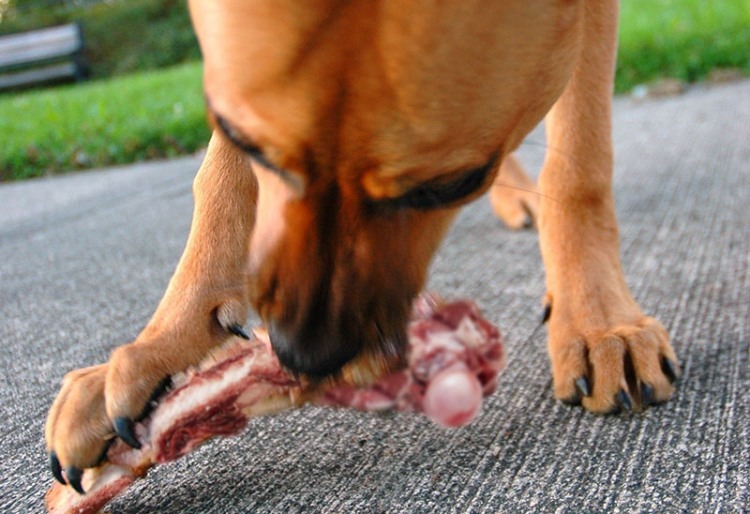
2. Raw meaty bones are the best toothbrushes
Much is made of the epidemic of dental disease in pet dogs, which sometimes begins when they’re barely into adulthood. There’s an industry built around products, and no shortage of home remedies to supposedly clean your dog’s teeth and sweeten his breath: dental chews, mouth sprays, chicken-flavored toothpaste, water additives.
But there’s a simple, obvious and natural solution that avoids all of the fussing: raw meaty bones. The tearing, ripping and crunching involved in devouring bone and cartilage make a raw meaty bone nature’s toothbrush. All those sinews are the canine equivalent of dental floss. Your dog will adore this kind of brushing!
It’s an unfortunate reality that many kibble-fed dogs are headed for anesthetized teeth cleanings, even extractions. Raw-fed dogs, or dogs whose diets are supplemented with raw meaty bones, have a far better shot at lifelong dental health. My dog’s teeth gleam without brushing or any artificial intervention, thanks to daily chicken frames and weekly lamb necks.
But that’s just one dog. What does the science say? This 2016 study found that raw meaty bones transformed dogs’ teeth, dramatically reducing dental calculus in a group of Beagles by almost 90 percent in just 20 days.
3. Use a Dremel to trim nails
This is easily the most stress-free gadget I’ve found for keeping a dog’s nails trimmed.
Why is a dremel dog-nail grinder such a game changer? It doesn’t cut, it grinds. This means there’s no risk of cutting the quick, and no way you can hurt your dog.
All four paws can be done in a couple of minutes. I build it into my dog’s routine as a quick, regular hit once he has his harness on and just before we head out the door for a walk.
It’s the little things!
4. The value of orthopedic dog beds
They’re a thing, and they’re worth the cost to protect your dog’s joints not just in old age, but also, right from puppyhood.
I discovered the power of proper bedding when my dog developed hygromas (fluid-filled sacs) on his elbows from too much lying on hard surfaces. The treatment for hygromas ranges from daily poultices, braces and bandages to fine-needle aspiration.
Then, I got an orthopedic dog bed and hey presto, the hygromas vanished within a month.
The secret to the orthopedic dog bed is its memory foam and multiple layers. The quality is streets ahead of the bean bag–like stuffing that’s usually inside even high-end dog beds. Don’t wait for something to go wrong to offer your dog the best possible bed. Our pups spend a majority of each day sleeping. It’s worth making sure they’re well supported.
5. Fasting has benefits
Feeding dogs every day is a human invention. Dogs’ closest living relatives, wolves, have a feast-or-famine food regimen. They regularly go for days without eating, or sustain themselves on secondary foods such wild berries when prey is scarce. In August 2017, researchers with the Voyageurs Wolf Project observed an adult wolf regurgitating berries for a group of five pups. In fact, a study of the weekly summer diet of gray wolves in northeastern Minnesota showed that from mid-July to mid-August, wild berries—primarily blueberries and raspberries—make up between 56 and 83 percent of wolves’ diet.
All of which is to say that your dog is evolutionarily adapted to periods of fasting. Domestic dogs are generally more sedentary than their wild counterparts, yet we feed them more. It’s no wonder a majority of pet dogs are obese.
Besides what happens in nature, there’s increasing scientific recognition of the benefits of fasting for both dogs and humans. Fasting has been shown to facilitate healing at a cellular level through a process known as autophagy. It’s a psychological hurdle for many owners, who equate love with filling a dog’s bowl. But there’s plenty of evidence to suggest that the opposite is actually the case. Incorporating a once-a-week “fast day” into your dog’s routine can support his natural processes of repair and regeneration and go a long way toward maintaining long-term health.
Fasting is a great first port of call for dog diarrhea or stomach upset, too. Chicken and rice might be the go-to remedy, but diarrhea and vomiting are how the body takes drastic action to quickly empty the gut. You don’t want to counteract this by putting more food in. A 24-hour digestive rest will have your dog back to normal in most cases. (Keep your dog hydrated and, of course, consult your vet if problems persist.)
6. Put food bowls on the floor
There’s conflicting information out there on whether raised or floor-level food bowls are better for lowering the risk of the deadly condition known as bloat. When this happens, a dog’s stomach fills with gas, then twists. It can come on fast, and is fatal if not promptly treated, usually with surgery to release the gas and restore the stomach to its normal position.
Prevention is the name of the game. One of the simplest things you can do is to use a slow feeder to stop your dog from gulping down his meal. Where confusion arises is in the bowl’s positioning: should it be on the floor, or elevated? Current thinking, as reported by Jerold Bell, DVM, in “Risk Factors for Canine Bloat,” is that elevated bowls may actually increase the risk of bloat for large-breed dogs. So, ditch the fancy platforms and go old-school.
Though floor-level bowls are thought to help, this is the exact opposite of what used to be advised. It’s also worth keeping in mind that there is disagreement, and a fair amount of confusion, as to what causes a dog to bloat. Ultimately, vets don’t really know.
It’s long been thought that vigorous exercise close to mealtimes and guzzling water might be triggers, but Bell’s report didn’t substantiate those popular theories. To the contrary, he noted that most dogs bloated in the middle of the night on empty, gas-filled stomachs. More needs to be learned, but the causes of bloat are likely to be multifactorial.
Many dog owners structure their dogs’ routines to minimize exertion on a full stomach, given that previous studies have suggested that can be a risk factor. Slow feeders at ground level and feeding a fresh-food diet are things you can do that have no downside and, according to current thinking at least, may well reduce your dog’s risk of suffering from gastric torsion.
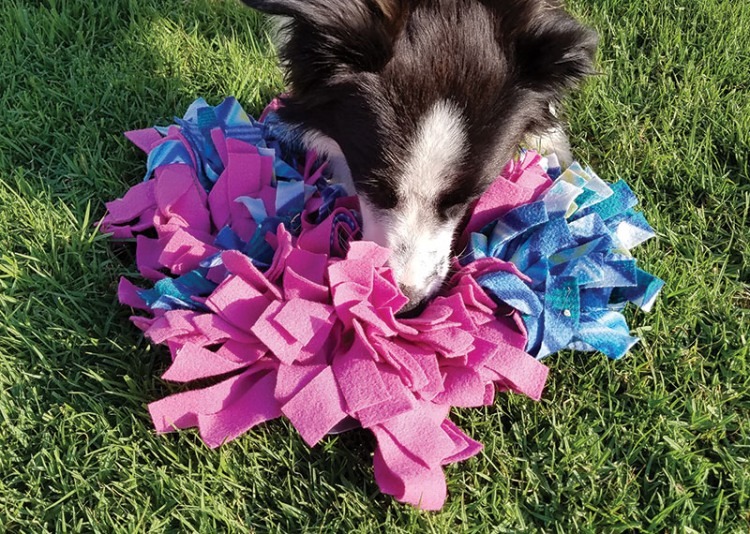
7. Snuffle mats provide mental exercise
These mats are fantastic for engaging a dog’s mind in play. Mental exercise tires a dog out faster than purely physical exertion, and sniffing is one of the best ways to harness your dog’s prey drive and get him thinking.
You can buy a snuffle mat or make one yourself using a rubber sink or door mat and strips of fabric. Hide healthy treats in the mat and leave it out to keep your dog occupied while you work. Or, offer it on a rainy day as an indoor activity that engages your dog’s energy in a constructive way. A snuffle mat has been an indispensable part of my toolkit for living in a tiny apartment with a Boxer.
8. How to recognize canine acid reflux
This is something else I didn’t understand when I saw it in my dog. It took another owner, who’d been through it with their own pup, to recognize the signs of acid reflux in dogs. I’ve since been able to spot acid reflux in many other dogs whose owners, like me, had no idea what the symptoms meant.
In dogs, acid reflux, or Gastroesophageal Reflux Disease (GERD), involves a constellation of symptoms. My dog had almost all of them simultaneously.
The classic signs are:
- Air licking
- Jaw snapping
- Drooling
- Gagging
- Hard swallowing
- Trying to eat leaves or specks of dust off the floor
- Fur or fabric licking
- Stomach gurgling
- Throwing up either bile or food
Acid reflux in dogs can last a few minutes or 24 hours straight. Treatment involves identifying the cause, but it all starts with a diagnosis.
9. The dangers of roadside sprays and lawn-care chemicals
Urban life for dogs involves a lot of chemical exposures. Consider how often your dog walks in publicly maintained parks or sports fields, or along grassy roadsides. These green spaces are almost certainly chemically treated with fertilizers and routinely sprayed with weed killers. My local council uses glyphosate, which has long been linked to cancer in humans.
Consider how close your dog’s nose is to the ground and how much of his interaction with the world involves sniffing. My dog deeply inhales every square inch of pavement, every tree trunk, every patch of grass.
Where I live (Melbourne, Australia), roadside spraying is done in the very early hours of the morning, and no signs are ever put up warning that the area has been freshly drenched. Who’s out first thing on that very ground? Dog owners, with their unsuspecting pups reading the pee-mail and savoring the scents.
You have no way of knowing about or effectively avoiding these exposures. But you can vary where you walk your dog. For example, my dog and I wander instead on the local beach several times a week, and I know those outings are less likely to expose him to herbicides.
You can also control the things you can control. By that, I mean minimize chemicals in the home. Consider making natural cleaners from vinegar and citrus juice instead of store-bought sprays with unpronounceable and potentially toxic ingredients. Avoid scented candles and hairsprays. Use an air purifier to combat off-gassing of volatile organic compounds (VOCs) released from a number of items commonly found in the home.
Anything that helps your dog’s liver keep up with the constant detoxification necessitated by modern life is worth doing.
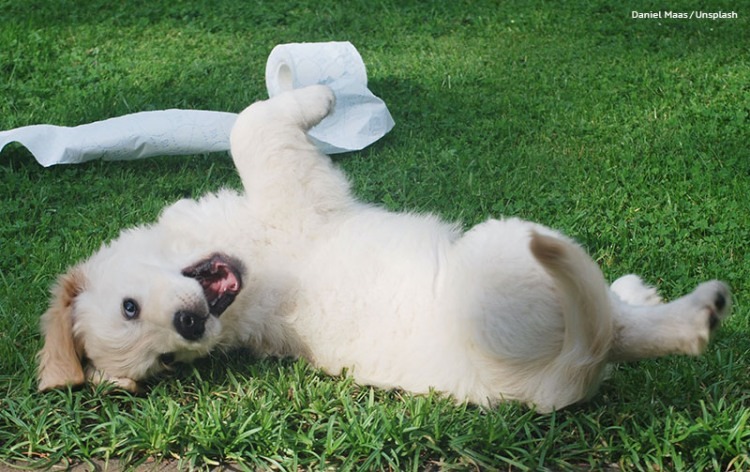
10. All puppy schools are not equal
I don’t know about your experience, but the puppy preschool we attended was full-blown chaos. Heaps of fun, sure. But we spent the next year unlearning the bad habits picked up there. When I finally found a good dog trainer, he shook his head. He’d seen it all before.
Now I know there should be a method to the madness. It’s not enough to throw a bunch of puppies in a room together and call it socialization. You don’t want a puppy preschool that simply lets the pups play and roughhouse in an unstructured way, with much excitement and little control.
As I learned, if it’s one big free-for-all, your puppy will quickly come to associate other dogs with going bonkers. That association lays the foundation for a whole host of problematic behaviors later on. It can be the reason your dog turns into a wild thing when you’re out walking and he spots another dog on the opposite side of the street. Dogs mean crazy play, right?
What you actually want is for your dog to see you as the most exciting thing in his world, and always his best option for where to place his attention. So, don’t automatically sign up for the first puppy preschool you’re offered. Look around, ask questions of the trainer so you understand their approach and know how the classes will be run.
Final Thoughts
So much of what I know about dogs, I’ve learned in roundabout ways. I started out as the kind of dog owner who’d say “Ask your vet” about everything. Whether it was my own health or my dog’s, I had a blind trust in the “white coat.”
These days, I believe in taking a much more proactive, independent approach. I’ve found immense value in connecting with other dog owners and in researching things for myself.
This isn’t an argument against vets. Rather, it’s a huge vote of confidence in the collective knowledge of owners. Dog owners represent a massive storehouse of practical wisdom of the kind that can only be gained by direct, lived experience.
]]>One of the things we love about dogs is their attention to the sensory world—no thinking about the past or worrying about the future. Just the here and now. By following their example, we can learn to turn down the volume and occupy the present.
Some days, it’s hard to get out of our heads and into our lives. We might be stuck on an emotion, mentally replaying an event that didn’t go as planned or worrying about a “What if” occurring in the future.
As a mental health counselor, I not only deal with my own questions and concerns about the “What ifs” in life, I try to help my clients manage their thoughts and emotions around the unknowns as well. I can’t always provide answers to the “What if” questions, but I do try to help my clients recognize what is in their control and what is not.
But what do we do with all of those worrisome thoughts and fears? Fretting about something doesn’t change an outcome, and holding onto stress and staying in a constant state of anxiety about what may or may not happen is not healthy. It’s bad for our overall health and is zero percent effective. So, how do we combat the “What ifs”?
Mindfulness is one way. When we are mindful of our present emotions, feelings, sensations and thoughts, we are not reliving the past or fearing what might happen in the future. We are living in the present moment.
One of my favorite ways to practice mindfulness is through exercise, which allows me to get out of my head and into my body. Walks with my dog, Wrigley, are particularly instrumental in my mindfulness practice. He and I take a sensory walk every day.
It’s easy to do—let me walk you through the steps…
Start your walk with your dog by your side. Mindfully engage your senses, allow yourself to step away from your thoughts and into your surroundings. As you tap into each sense, dive into it as fully as your dog does with his nose. When Wrigley senses something on his walks, he investigates it with all of his attention. Channeling your inner puppy, start by noticing everything you smell.
Take a big, deep breath. What do you smell? Maybe you’re by the water and you smell a mix of ocean air, sunscreen and dough boys, or you’re walking past a recently mowed yard and you smell the freshness of the cut grass. Inhale all of the scents, one breath after another.
Look around and focus on what you see, not what you’re thinking. Home in on one thing at a time. Observe the colors, the patterns and the placement of things. Maybe you discover a house you’ve never noticed before, or that your neighbor’s hydrangeas are coming into view in periwinkle blues and lavender hues. Take mental pictures of what you see.
Pay attention to the various vibrations around you. Picture your dog’s ears perking up in response to different environmental sounds. Are they in the distance or nearby? Is it a single sound or a grouping of sounds—human voices, children’s laughter or the rustling of leaves on the trees? Pay attention to all of the ways the world is attempting to communicate with you.
What do you feel? Maybe it’s the warmth of the sun on your face, the pebbles under your feet or the silky blades of grass as you run your fingers through them. Take note of all of the things around you, and how they literally touch you.
Finally, what do you taste? You don’t necessarily have to put something in your mouth to taste it. If you’re walking along the coast, you may taste the salt air, or the humidity. Let the tastes linger.
After I purposefully engage all of my senses, I tend to feel so much more alive and invigorated because my senses are awake and taking in everything around me. This exercise never fails to get me out of my head, away from my anxious thinking, and into my body and my surroundings.
The sensory walk is a gentle reminder that the best way to deal with the unknown is to take time to care for ourselves. When we take good care of ourselves and choose to be present, we’re able to greet the future and all of its unknowns with the most balanced and centered version of ourselves, walking peacefully beside our loving, furry friends. And that is completely within our control.



